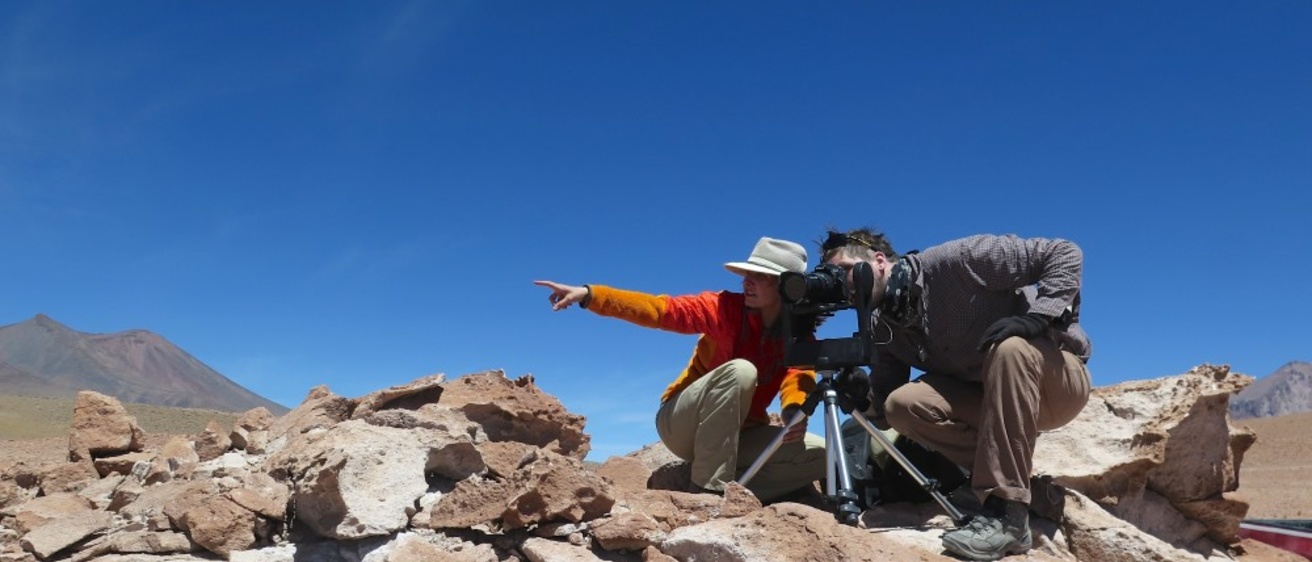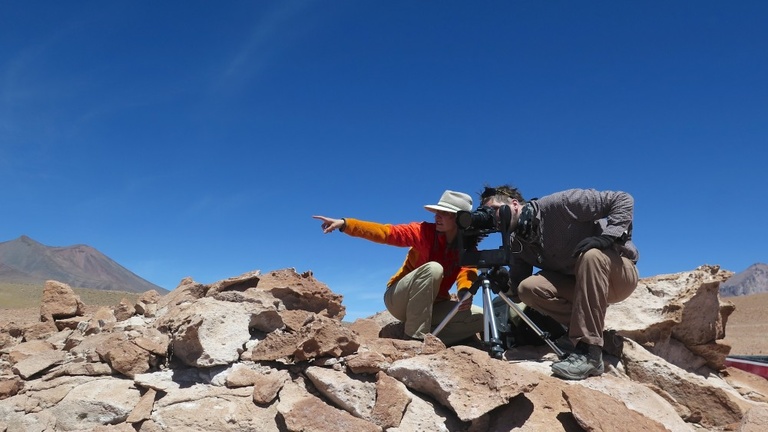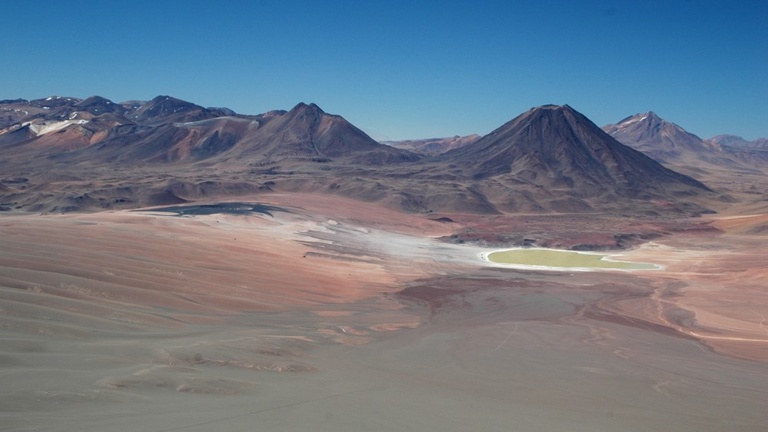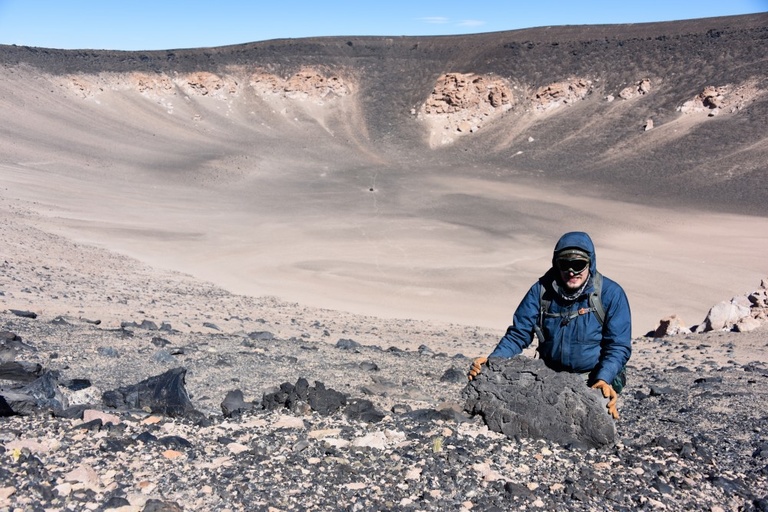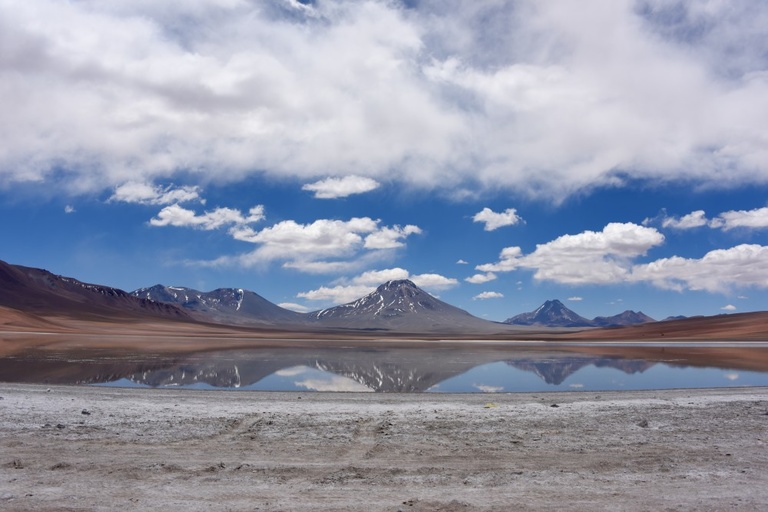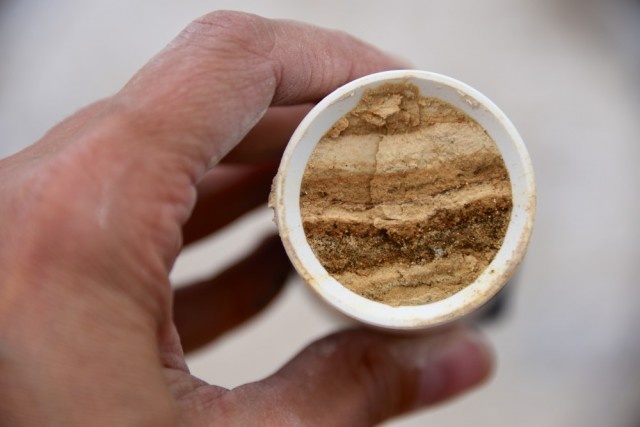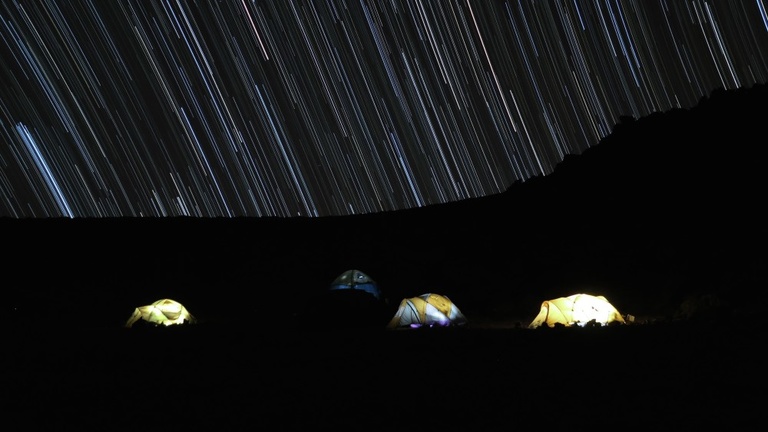When University of Iowa Earth and Environmental Sciences associate professor Ingrid Ukstins Peate was studying the bright red waters of Aguas Calientes in northeast Chile—one of the highest lakes in the world—she could see an opportunity on the horizon.
Laguna Lejía’s 9-foot-tall carbonate deposits were just blips in the distance then, but, nine years later, Ukstins Peate followed her initial inspiration, and returned to Chile.
Ukstins Peate—along with Sam Saltzman, a Master of Science student in Geoscience focusing on geochemistry and paleoclimatology from Lake Forest, Illinois, and Brennan van Alderwerelt, a doctoral student in volcanology and igneous petrology from Portland, Oregon—spent two weeks at Laguna Lejía in October 2014. The trio was armed and ready to study the leftovers from one of the largest climate change event in Earth’s recent history.
The Younger Dryas was a 1,300-year-long cold snap and drought that happened approximately 12,800 years ago. The change was swift and abrupt: temperatures in the Northern Hemisphere plunged from those similar to present day down to a glacial state. Then, as the Younger Dryas ended, about 11,500 years ago, temperatures rose abruptly—in Greenland, about 10° C (18° F) in a decade. While there are good records of the period’s impact on the Northern Hemisphere, little is known about what happened in the Southern Hemisphere. Ukstins Peate is hopeful that Laguna Lejía holds the clues.
“There are lake records all over the planet, but it’s very hard to find that kind of consistent record in the Andes with all the active volcanism and tectonics that happen there. There aren’t a lot of sequences like this that are preserved for South America for that time frame,” Ukstins Peate says
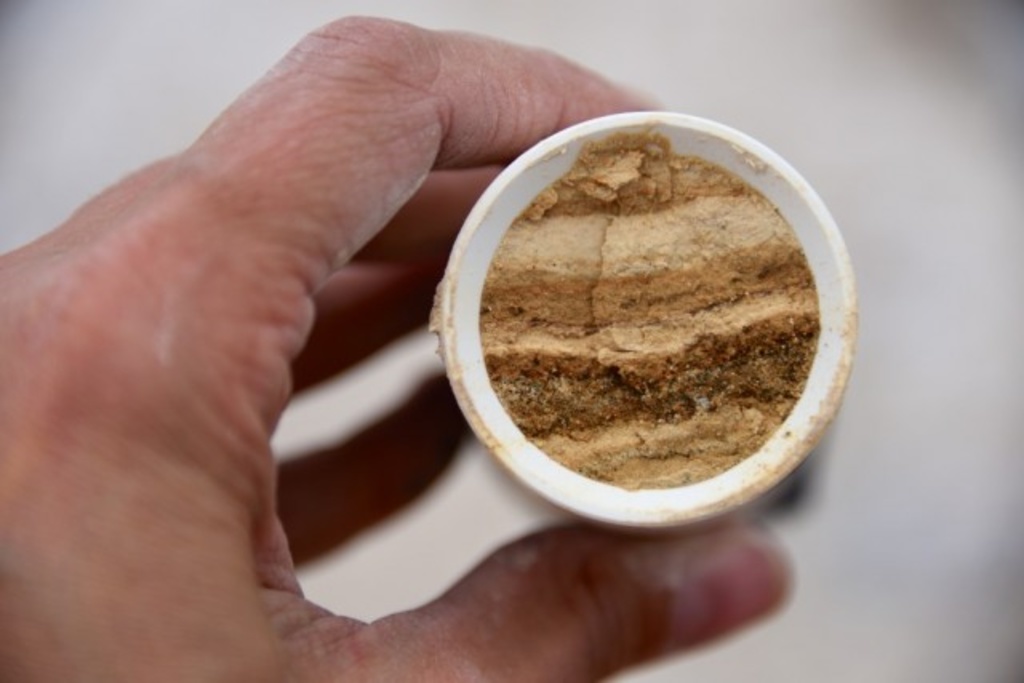
The sediments Ukstins Peate studied at Lejía were deposited when the lake’s water levels were at its highest point, and through the Younger Dryas period, starting roughly 20,000 years ago. As the climate warmed and water levels receded near the present, the sediment layers became exposed. Ukstins Peate and her geology graduate students took core samples of the layers. They shipped the cores to the UI and are now analyzing how the composition of the rocks and the organisms living around them changed.
“You can go through and sample these and you can see that there are a lot of detailed laminations in here, and if you can sample them at a high resolution, you can track what the lake was doing over time as it was drying up,” Peate says.
The research team is analyzing those samples with civil and environmental engineering professor Tim Mattes, who is able to pull DNA out of the sediment to figure out how organisms living in the lake changed throughout the Younger Dryas. Meanwhile, Ukstins Peate’s team determines composition, mineral content, and temperature information, showing how the structure of the land around the lake changed as temperatures dropped.
“That’s one of the neat aspects of this project,” she says. “We can actually track the changes in the ecosystem in the lake, as well, and that’s a really powerful thing to do.”
That research not only serves to fill in the understanding of the Younger Dryas’ impact on the Southern Hemisphere, but also, how the entire planet may react to climate change in the future.
“Once we know how the Northern Hemisphere and the Southern Hemisphere were relating for the same event, then we can start to think about global climate change for these really big climate events that we see,” Ukstins Peate says.
A third UI researcher, Scott Spak, will take Ukstins Peate and Mattes’ chemical and ecological data and plug it into his global climate models to get a better idea of the integrated global reaction. If the researchers can understand how specific regions of the earth are impacted when the climate changes, and how the changes in those regions impact other parts of the globe, they can make better predictions of how the planet will respond to future climate change events.
“We can use the magnitude of response for this event to try to compare to what we see as the different magnitudes of response today for an event that we don’t know the end result of in the future,” Ukstins Peate says.
